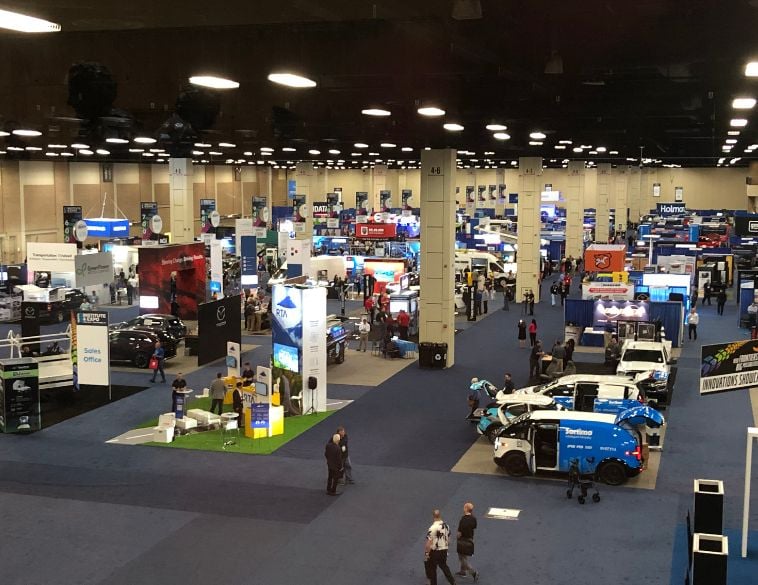How to effectively monitor drivers and measure the effectiveness of your training program.
Driver safety is a key concern for all fleet professionals. Getting every employee back home to their families at the end of every day, safe and sound is always a priority.
With safety in mind, fleet professionals often turn to driver training as a way to improve overall safety and reduce risk. However, according to Shawn Morris, VP of Fleet Management Services and Canadian Operations for Holman, fleet managers should keep in mind that driver safety begins long before an employee is ever handed a set of keys to a company vehicle.

“I believe the process begins with HR and recruiting,” Morris explains. “You need to make sure you have the right candidate for the right role, and if that requires operating a fleet asset of any sort, you have to make sure they have the qualifications to operate that asset.”
Morris recommends conducting a background check and getting a copy of each potential employee’s driving record if they’re going to have access to your fleet vehicles or equipment.
While it’s easy to assume that certain types of drivers, like delivery drivers for example, are most at risk, Morris says that this isn’t always the case. “We see pharmaceutical fleets with a high rate of accidents,” he says. “Now, that might correlate with kilometres driven, since they’re on the road all the time, but we do see a higher rate. However, you can’t assume that just because they have their full G1 license, that means they’re going to operate a company vehicle properly. You need to train your drivers and you need to monitor their performance behind the wheel.”
Telematics is a must
The best way to monitor a driver’s behaviour is with telematics. Once you’re able to accurately measure and assess each driver’s performance, you can then reward employees for exhibiting good behaviour or administer corrective training to your high-risk drivers (or a combination of the two) to help mitigate risk, Morris explains.
“Some of our clients will use a driver safety scorecard that’s connected to their compensation program,” he explains. “When drivers stay within the safety parameters set by management, it may improve their bonus, or their compensation, or maybe even their choice of vehicle.”
Typically, fleet managers lack both the time and the resources necessary to effectively train their drivers. So naturally, it makes sense to recruit the help of a third party that specializes in driver training.
“More often than not, you need a partner,” Morris says. “Most fleet management companies offer the tools and resources you’ll need to train your drivers. If you’re not working with a fleet management company, you can get the help you need from driver training organizations that offer training modules that address the particular needs of each driver. In-car training is also an option, if you feel that it’s necessary or that it will help.”
While training is often reactive, proactive training helps to mitigate risk before an incident occurs. For example, Morris explains, that if you see an issue reported on the driver’s record, you can deploy specific training to address the issue before it becomes a problem. The same applies to an alert from a particular driver’s telematics system. Telematics can identify instances of high-risk behaviour such as speeding, harsh braking, or rapid acceleration, helping you identify this behaviour and deploy corrective training before it becomes a larger problem.
As for proactive training, Morris says that a number of Holman’s clients schedule winter driving training, as an example, for all their drivers in the month of November, making sure that everyone is ready to deal with the first snowfall of the season.
Tracking progress
Aside from telematics, which can be used to report unsafe driving in real time, Morris says that fleet managers will know whether their driver training program is working by keeping an eye on their accident rates, as well as each person’s driving record, which should be reviewed regularly. If incidents are on the rise, then the driver training program may need to be adjusted or you may need to employ a telematics solution for better visibility into driver performance. If these key metrics are improving, then your training program is working. But don’t let success lead to complacency; ensuring driver safety requires a long-term, consistent commitment to these best practices.
Stephen White, Associate VP, Enterprise Sales at Geotab explains that real-time telematics data is key to monitoring drivers, and determining who is responding well to training, and who needs more attention.

“We offer advanced telematics solutions that provide real-time insights into driver behaviour,” he explains, “and the important word here is ‘real-time.’ It also gives you real-time vehicle performance data and safety. Fleet managers can use these tools to monitor driver performance, identify areas of improvement, and assess the effectiveness of their driving program.”
Real-time feedback and data, White argues, can help fleet managers make the right decisions and implement changes, either immediately or whenever they feel would be best, in order to improve the effectiveness of training initiatives.
“Having access to real-time data is important because this allows you to spot an issue while it’s happening,” White adds. “So instead of letting it build up, and waiting until there’s an accident, we can take this real-time data and prevent an accident from happening in the first place.”
A holistic approach
Addressing issues in real time doesn’t have to be complicated. There’s no need for someone to sit by a computer waiting for an alert to pop up. White says that drivers can be coached remotely whenever an incident, like aggressive braking, is detected. “It can be as simple as a beep inside the passenger cabin, or an actual voice command telling the driver that they’re exceeding company safety policies,” he explains. In addition, the system can send out an alert to management in real-time, letting them know that this particular driver may need more training or a reminder.
“We can even set up the system so that more serious violations go up the chain of command,” White adds. “So maybe the VP of Safety gets alerts only when there’s a very serious violation, while the fleet manager gets all other alerts sent to them, and them alone.”
In addition to telematics, White says that driver feedback and incident reports can be added to the mix for a more complete picture of driver safety. “We really emphasize a holistic approach,” he adds. “Combining these sources of information provides a very comprehensive view of driver behaviour, and allows fleet managers to make well-informed decisions about the success of their training programs.”



